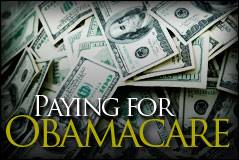Commentary

ObamaCare Is Bad Medicine for Pennsylvania
America faces divergent prescriptions for health care reform—one calling for more government control, the other for patient empowerment. Unfortunately President Obama, Governor Rendell, and Democrats in Congress and the state House continue to pursue the former remedy.
Members of Congress have recently faced citizens upset with a proposed government takeover of health care. In response to protests, “ObamaCare” proponents have adopted an “attack the messenger” approach, calling those who disagree with their health care agenda “the mob,” or shills for special interests. Ironically, Big Pharma, the American Medical Association (not to be confused with rank-and-file doctors), unions, and George Soros are pouring millions into lobbying and advertising for ObamaCare. Even the demonized insurance companies are working with Obama to keep “a seat at the table” and get a piece of the pie. But attacking the messenger is only a diversion from the problems caused by increasing government’s role in health care.
There is plenty to dislike about proposals in Congress and state houses. There are government programs patterned after Medicare and Medicaid, which have low-quality coverage and ever-growing costs that are increasingly shifted to private insurance. Then there are higher taxes on high-income earners, low-income smokers, the uninsured, businesses, benefits, insurance premiums, and more. There are mandates on individuals to buy insurance, on employers to provide insurance, for what insurance must cover, and how insurers can price. There are new government boards designed to ration care.
In a recent study for the Commonwealth Foundation, a research team led by noted economist Art Laffer found that a national health care plan would add $4,400 in additional health care costs for every man, woman, and child in Pennsylvania. Not only would there be the obvious cost of higher taxes for federal programs, but “crowd out” (shifting individuals from private coverage to government programs), higher costs for state government, and escalating health care inflation. The report also found that in 2019, Pennsylvania’s economic growth would be reduced by 5.1 percent. All this without significantly reducing the number of uninsured—despite an additional $1 trillion in expected health care subsidies, 30 million people nationally would remain uncovered!
A government takeover of health care fails to address the true problem: rising costs. Health care inflation can largely be ascribed to failed government intervention, not a failure of the free market, by creating a “wedge” between patients and doctors. While government’s share of health care spending has grown, representing nearly half of all health care expenditures today, out-of-pocket expenses dropped from 50% in 1960 to only about 10% today.
The effect of this spending shift, as well as heavy government regulation on insurers and providers, has been to remove patients from decision-making. This wedge eliminated incentives for doctors or patients to reduce costs and find better ways to deliver health care. Further government spending and regulation would only exacerbate these problems.
Yet we are not faced merely with a choice of “change” or the status quo. We can better reform health care by giving patients—not government—greater control. Here are specific proposals Congress and state lawmakers should take to return health care decisions to patients:
- Equalize the tax treatment of health coverage, so that individuals—not employers or government—own their health coverage.
- Repeal benefit mandates on insurers. State mandates (Pennsylvania has 52) drive up the cost of coverage. A recent study finds that each mandate results in about a 0.25% increase in the number of uninsured.
- Allow residents to purchase insurance plans approved in any of the 50 states. One estimate suggests interstate competition would reduce the number of uninsured by 25 to 33 percent.
- Repeal state laws which drive up the cost of prescription drugs, requiring higher prices than places like Wal-Mart would otherwise charge.
- Overhaul the Medicaid system, converting Medicaid spending into simple vouchers for low-income individuals to purchase their own insurance. This would improve quality, save costs to taxpayers, and reduce the price of private insurance by eliminating cost shifting.
- Adopt tort reform, eliminating frivolous suits and jackpot jury awards that drive up the cost of health care.
The decision facing lawmakers is not whether to enact health care reform, but which direction to take. Only a move to patient control of health care will reduce costs and improve the quality of our health care system.
###
Nathan A. Benefield is Director of Policy Research with the Commonwealth Foundation (www.CommonwealthFoundation.org), an independent, nonprofit public policy research and educational institute based in Harrisburg.